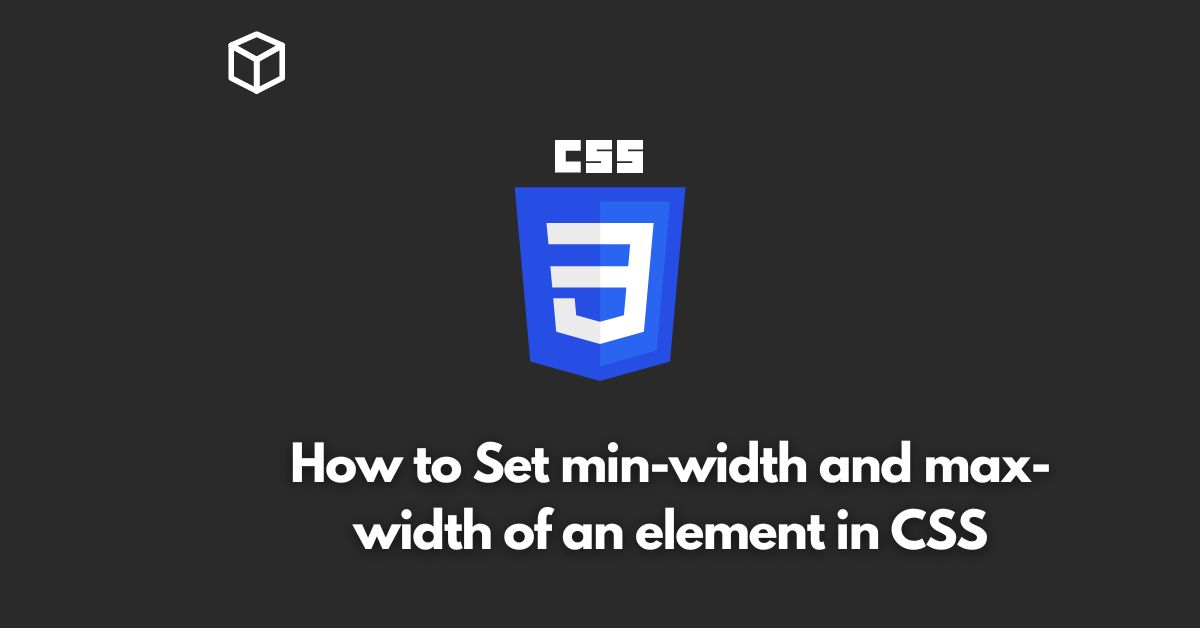CSS (Cascading Style Sheets) is a styling language that is used to control the layout and presentation of webpages.
One of the most important aspects of CSS is the ability to control the width of elements on a webpage.
In this CSS tutorial, we will discuss how to set the min-width and max-width of an element in CSS.
Before we dive into the details, let’s first understand the difference between min-width and max-width.
What is min-width?
The min-width property sets the minimum width of an element.
This means that the element will not shrink below the specified width, even if the content inside the element is smaller.
What is max-width?
The max-width property sets the maximum width of an element.
This means that the element will not expand beyond the specified width, even if the content inside the element is larger.
Setting min-width and max-width in CSS
To set the min-width and max-width of an element, you can use the following syntax:
selector {
min-width: value;
max-width: value;
}The value can be specified in pixels (px), ems (em), or percentage (%).
Here’s an example of setting the min-width and max-width of a div element to 300px and 600px respectively:
div {
min-width: 300px;
max-width: 600px;
}Using min-width and max-width in Responsive Design
In responsive design, it’s important to use min-width and max-width to control the layout of elements on different screen sizes.
For example, you can use min-width to ensure that your layout remains legible on small screens, while using max-width to prevent elements from becoming too large on larger screens.
For example, you can use the following code to set the min-width of an element to 300px on screens smaller than 600px, and 600px on screens larger than 600px:
@media (max-width: 600px) {
div {
min-width: 300px;
}
}
@media (min-width: 600px) {
div {
min-width: 600px;
}
}Conclusion
In conclusion, the min-width and max-width properties in CSS are powerful tools for controlling the layout and presentation of webpages.
By using these properties, you can ensure that your layout remains legible and visually appealing on all screen sizes, while also preventing elements from becoming too small or too large.
With this knowledge, you can start experimenting with min-width and max-width in your own projects and create professional and polished websites.




